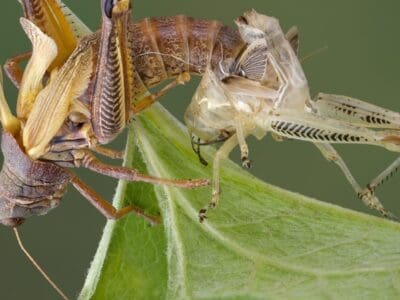Exoskeleton means outside skeleton. An exoskeleton is an external skeleton or hard outer covering that provides support, protection, and a surface for muscle attachment in some animals. Exoskeletons are commonly found in invertebrates, such as insects, crustaceans, and mollusks. The exoskeleton is typically composed of tough material and provides a barrier between the animal’s soft tissues and the outside environment. In addition to its structural function, the exoskeleton can also serve as a defense mechanism against predators or as a means of locomotion for the animal.
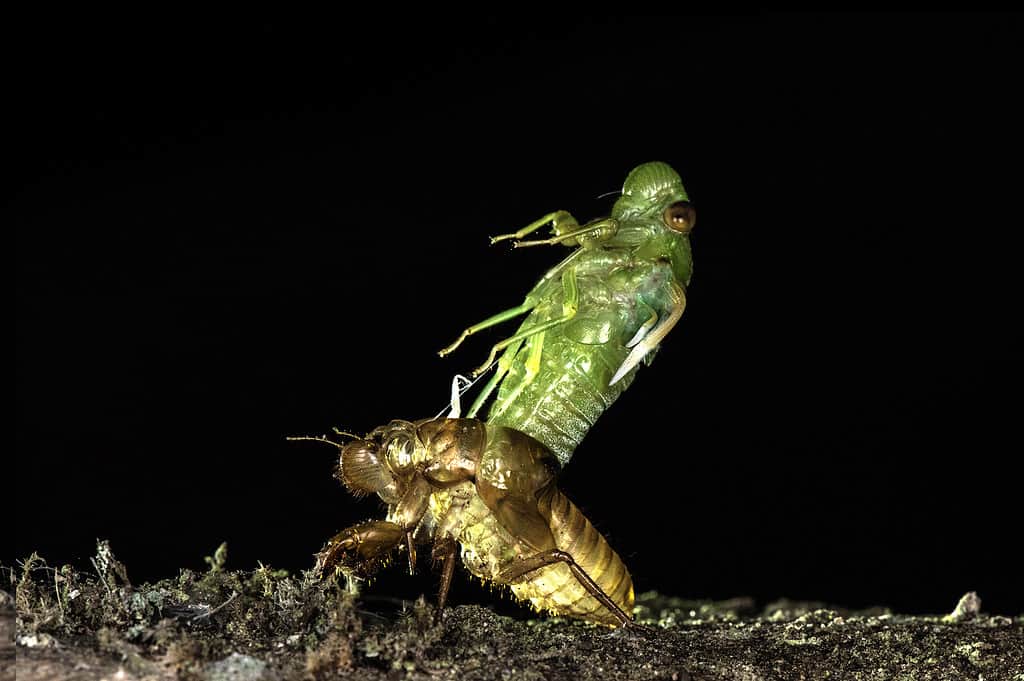
The exoskeleton is typically composed of tough material and provides a barrier between the animal’s soft tissues and the outside environment.
©Norjipin Saidi/Shutterstock.com
What are Exoskeletons Made of?
Exoskeletons are made principally of chitin, a complex polysaccharide that provides structural support and protection. However, The composition and structure of the outer shells vary among different groups of animals. The exoskeletons of crustaceans, such as crabs and lobsters, contain significant amounts of calcium carbonate, which makes them harder and more rigid than the outer shells of insects and other arthropods. The exoskeletons of some insects, such as beetles, may also contain additional minerals such as calcium, magnesium, and zinc, which can make them stronger and more resistant to wear and tear. In addition to chitin and minerals, the shells of some animals may contain other organic compounds, which give them properties such as flexibility or resilience.
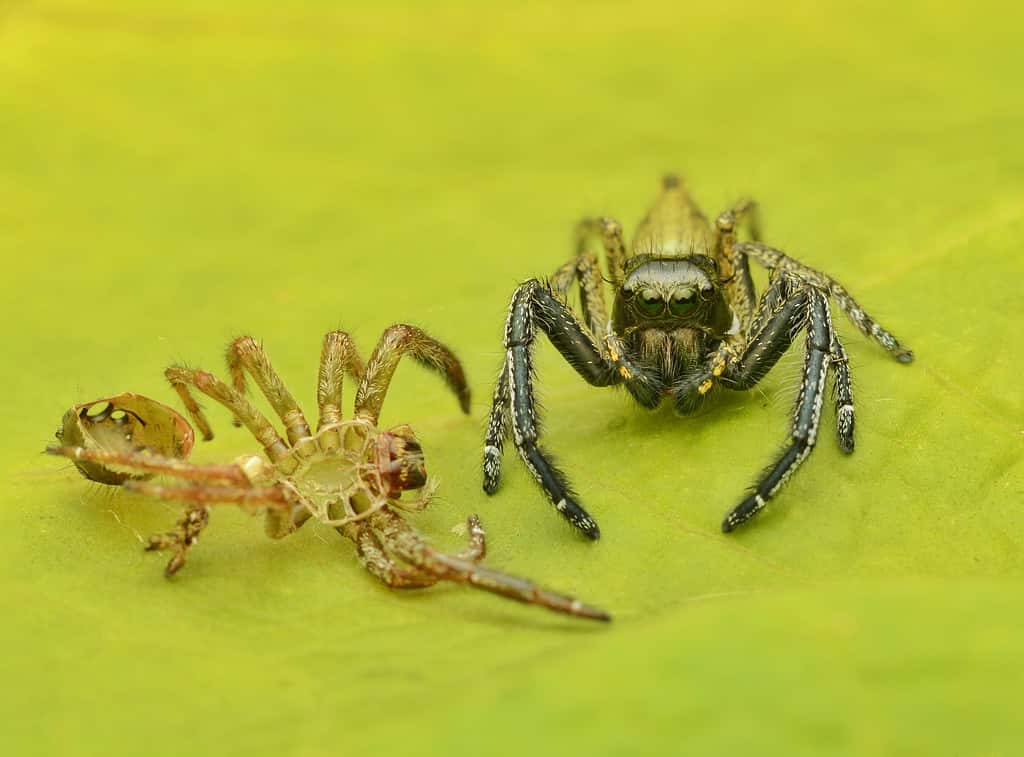
Exoskeletons are made principally of
chitin
, a complex
polysaccharide
that provides structural support and protection.
©Niney Azman/Shutterstock.com
What is Molting?
The molting process, also known as ecdysis, is a critical stage in the lifecycle of arthropods, during which they shed their exoskeleton and grow a new one. Their outer shell serves as a protective barrier that supports the body and prevents water loss, but as the arthropod grows, the outer shell becomes too small and needs to be replaced.
The molting process involves several stages. First, the arthropod secretes a new exoskeleton underneath the old one. This new shell is initially soft and flexible, which allows the arthropod to expand and grow. The old exoskeleton is then split or shed, typically at a specific location on the body called the ecdysial line.
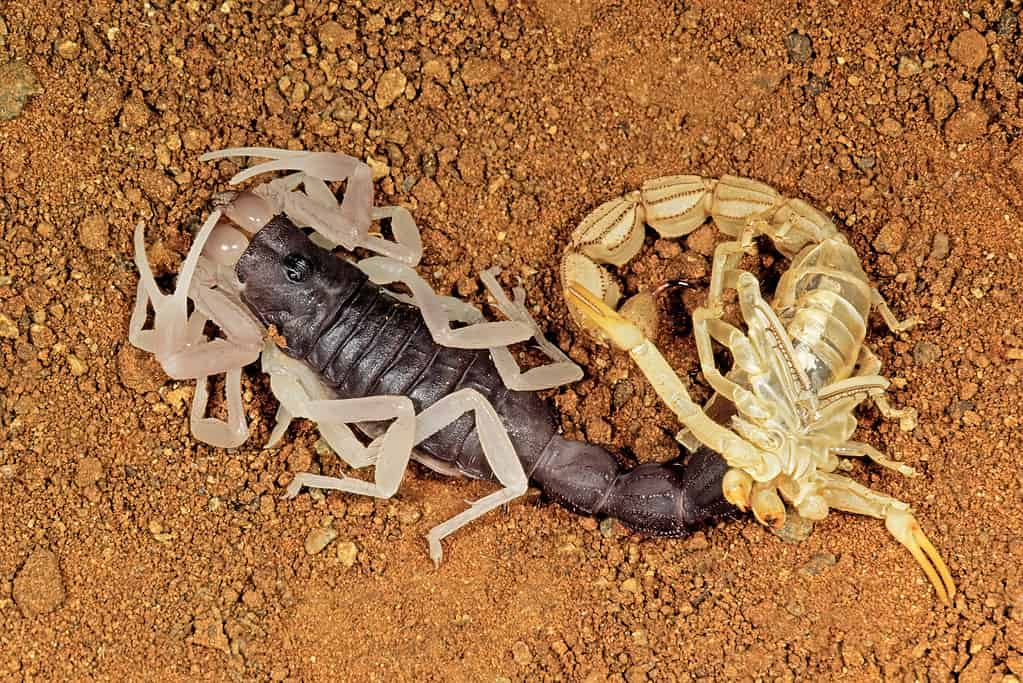
The new shell is initially soft and flexible, which allows the arthropod to expand and grow.
©EcoPrint/Shutterstock.com
Once the old shell is shed, the arthropod inflates its body with air or water to increase its size and help the new exoskeleton expand to its full size. The new exoskeleton is initially soft and pliable, and the arthropod may be vulnerable to predators during this time.
As the new shell hardens and darkens, the arthropod can resume its normal activities. The process of hardening the exoskeleton is called sclerotization.
The molting process is regulated by hormones, which control the timing and frequency of molting. Different species of arthropods have different molting patterns, depending on factors such as their growth rate, environmental conditions, and lifecycle. Some species of arthropods will molt several times before reaching adulthood, while other species will only molt once or twice.
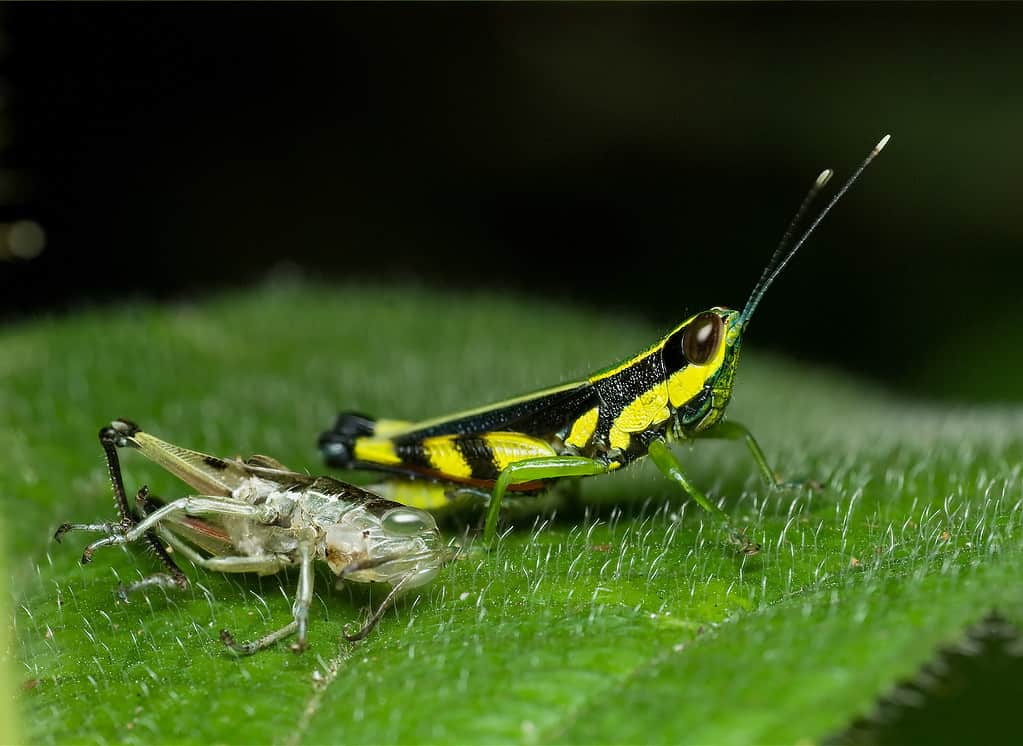
Some species of arthropods will molt several times before reaching adulthood, while other species will only molt once or twice.
©kurt_G/Shutterstock.com
What Animals Have an Exoskeleton?
- Insects, such as beetles, ants, grasshoppers, praying mantises, and crickets
- Crustaceans, such as crabs, lobsters, shrimp, crayfish
- Arachnids, such as spiders, scorpions, and ticks
- Mollusks, such as snails and clams
- Echinoderms, such as sea urchins
- Nematodes, such as roundworms



